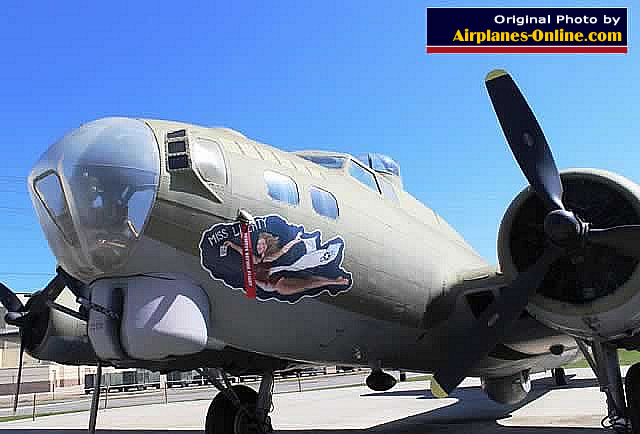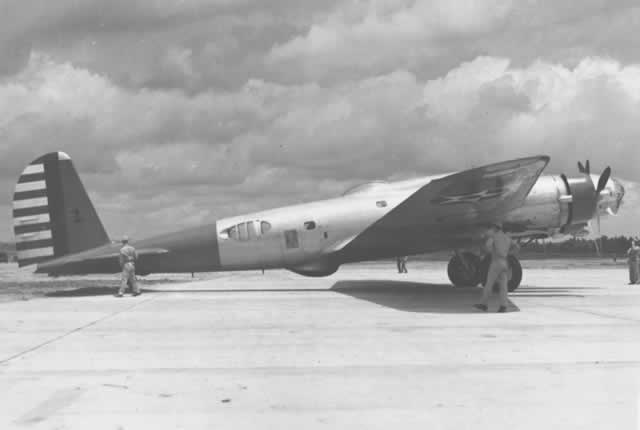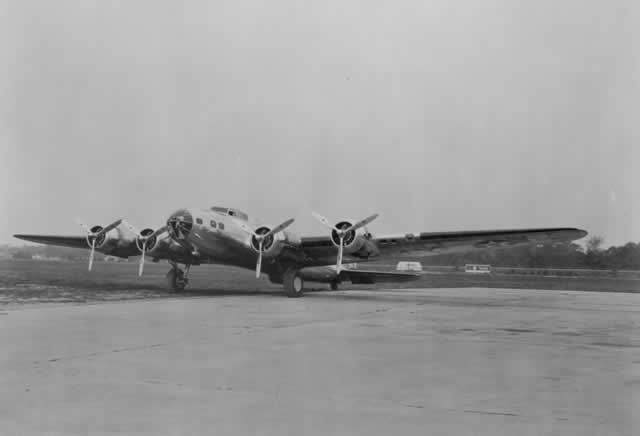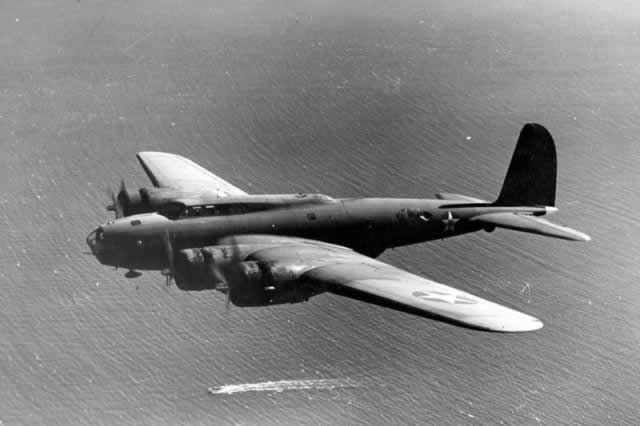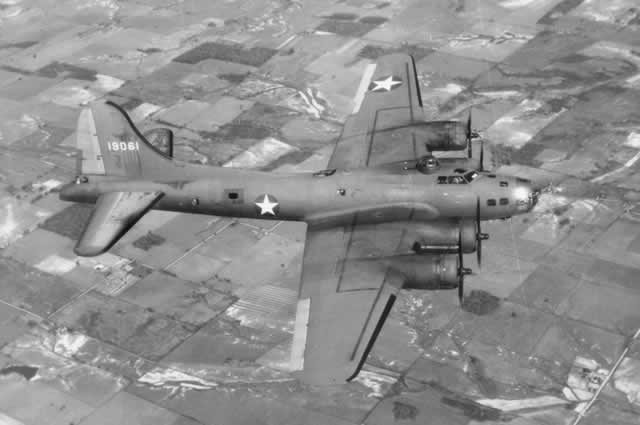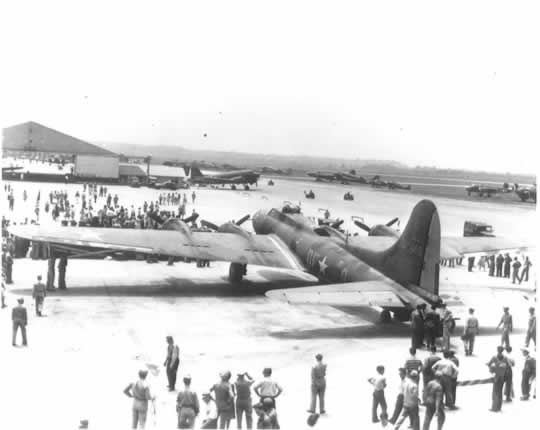B-17 Flying Fortress Design, Models and Specifications
The Boeing B-17 Flying Fortress four-engine heavy bomber is one of the most famous, and successful, airplanes ever built. The B-17 received the name "Flying Fortress" from a Seattle news reporter who commented on its defensive firepower, and said "It's a Flying Fortress".
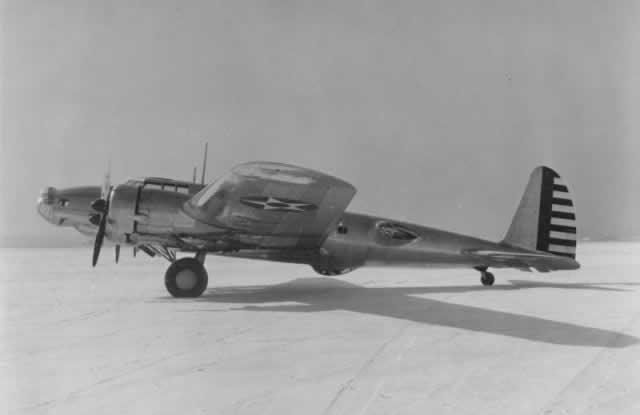 Boeing Y1B-17 Prototype Boeing Y1B-17 Prototype |
Design and Development of the Boeing B-17
The original intent for the B-17 was the protection of the U.S. mainland from invasion fleets. In 1934, the Boeing Aircraft Company of Seattle, Washington, began construction of a four-engine heavy bomber. Known as Boeing Model 299, the airplane first took flight on July 28, 1935.
The government ordered production of 13 of these aircraft, designated the Y1B-17. Delivery of these first production models was between January 11 and August 4, 1937.
When Pearl Harbor was bombed by the Japanese on December 7, 1941, few B-17 planes were in service. But production lines quickly ramped up.
 Boeing B-17F Flying Fortress Boeing B-17F Flying Fortress |
The B-17E, the first mass-produced model Flying Fortress, carried nine machine guns and a 4,000-pound bomb load. The airplane was several tons heavier than the prototypes and was loaded with armament. It was the first Boeing airplane with the distinctive tail for improved control and stability during high-altitude bombing. Each version was more heavily armed.
The B-17E was indeed an extensive revision of the Model 299 design. The fuselage was extended by 10 ft, and a gunner's position was added in the new tail. The nose (especially the bombardier's well-framed nose glazing) remained relatively the same as earlier -B through -D versions, but featured the addition of an electrically-powered manned dorsal gun turret just behind the cockpit. The tail turret eliminated a previous defensive blind spot.
B-17F variants were the primary versions flying for the Eighth Air Force to face the Nazis in 1943. This model had standardized the manned Sperry ball turret for ventral defense, along with an enlarged, nearly frameless Plexiglas bombardier's nose enclosure for much improved forward vision.
The B-17F lacked adequate defense against a head-on attack. By September 1943, the Flying Fortress showed its final shape during firepower tests on the XB-40, a modified B-17F with the advantage of a "chin" turret. The success of the chin turret, led to the delivery of the B-17G
The B-17G was the result of an almost continuous improvement program of earlier B-17 models. The G model was basically the production version of the B-17F after the modifications and improvements were incorporated into the design. Although the Bendix chin turret is the most obvious improvement incorporated into the B-17G, it was actually first used on late model B-17Fs.
Specifications of the B-17G Flying Fortress (final production model)
Boeing B-17G Flying Fortress "Miss Liberty" S/N 44-83884 painted as 231340 at the Barksdale Global Power MuseumArmament: 13 .50-cal. machine guns; normal bomb load of 6,000 lbs.
Engines: Four Wright Cyclone R-1820s of 1,200 hp each
Maximum speed: 300 mph
Cruising speed: 170 mph
Range: 1,850 miles
Ceiling: 35,000 ft.
Span: 103 ft. 10 in.
Length: 74 ft. 4 in.
Height: 19 ft. 1 in.
Weight: 55,000 lbs. loaded
B-17 Flying Fortress Model Evolution
Y1B17-A ... the Boeing B-17 Prototype |
|
B-17B Flying Fortress |
|
B-17C Flying Fortress 404029 |
|
B-17D Flying Fortress |
|
B-17E Flying Fortress 41-9061 |
|
B-17F S/N 42-30043 |
|
More B-17 Flying Fortress Photos
B-17 Flying Fortress "Memphis Belle" during war bonds tour |
||||
|
B-17G "Five Grand" S/N 43-37716 awaiting the scrapping process at Kingman AAF in Arizona. This was the 5,000th B-17 built by Boeing in support of the World War II effort. It was unique in that on it were written the signatures of Boeing workers. In wartime action, it flew 78 missions with the 96th Bomb Group, according to a LIFE Magazine article |
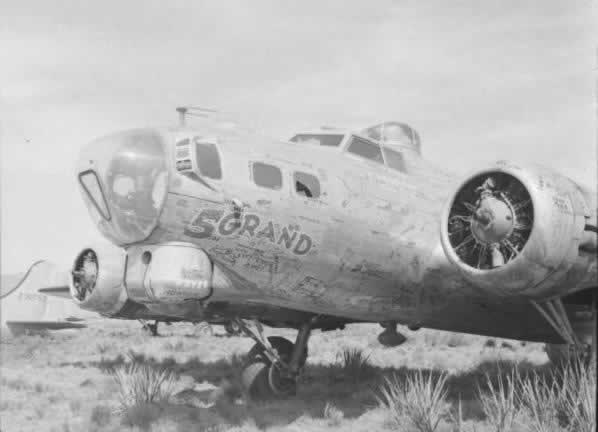 |


